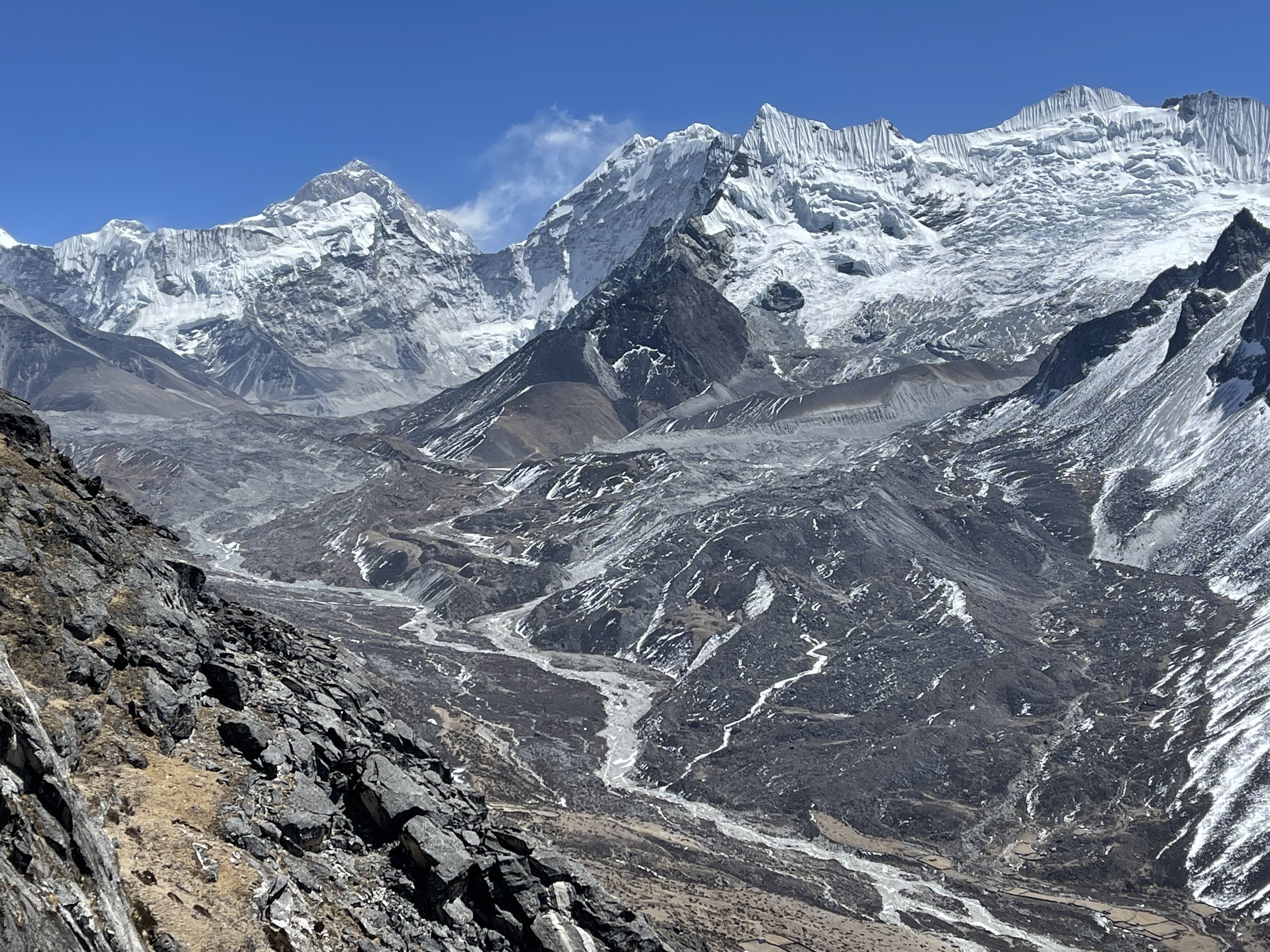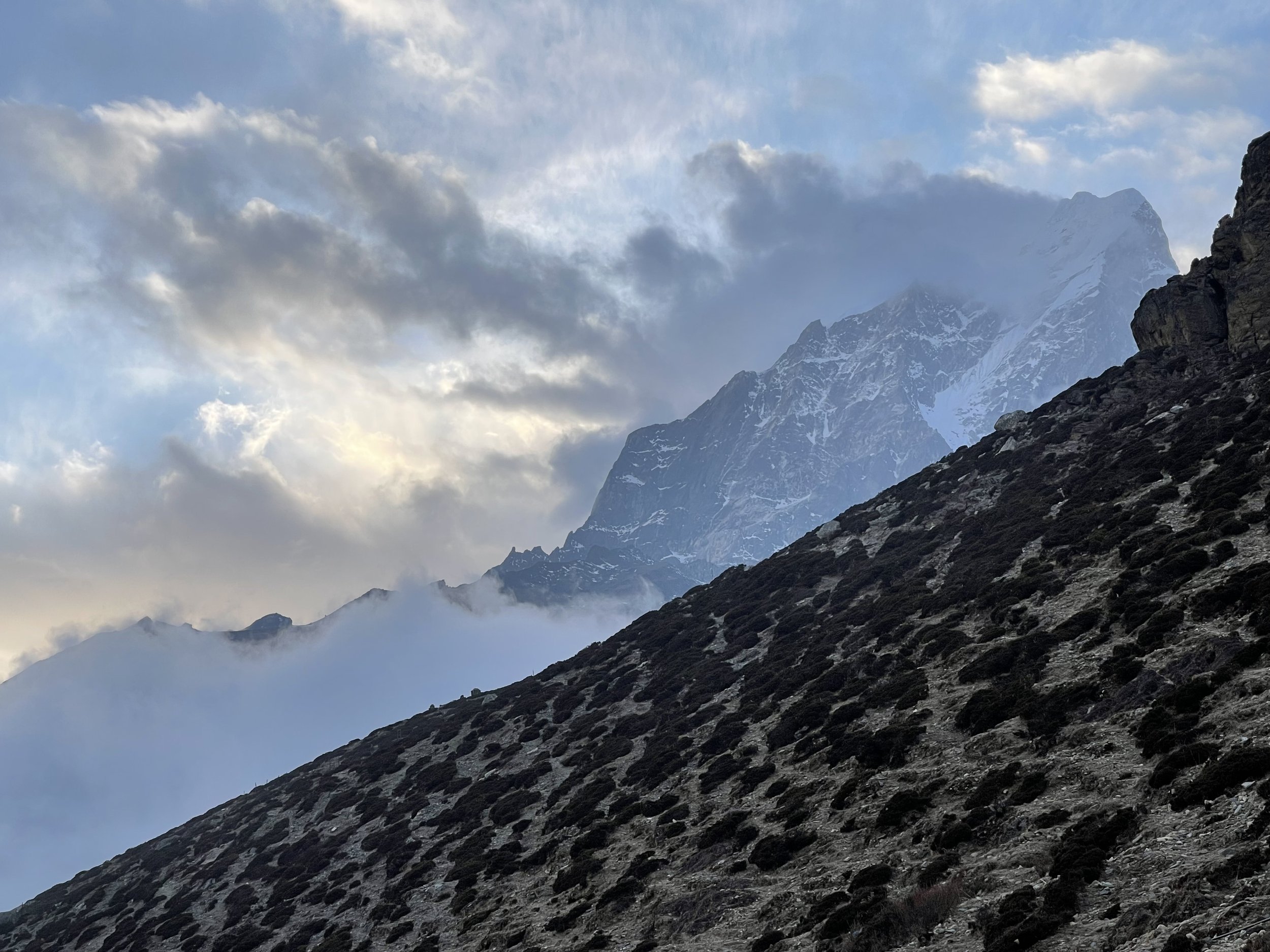
Everest Trek: Part 2
Namche Bazar to Dingboche
Trekking up to Everest Base Camp requires a heaping dose of patience to ascend from 8,562 feet up to 17,600 feet. Taking many small baby steps uphill and going “slowly, slowly” as the guides often reminded us was pretty much mandatory. Sometimes extra nights in unexpected places, like Dingboche at 14,200 feet, were needed to get use to the altitude to ensure success and keep the fun-o-meter high. A deep, unwavering love for Dal Bhat (rice, lentil soup, and vegetable curry) and black tea was also helpful, as a variety of food choices high on the mountain slopes was only a feverish, high altitude dream. Despite these hardships and a few inconveniences, like frosty lodge rooms and frozen water pipes, the views and community on the trail were unsurpassed. It was a journey like none other, especially since Bir carried our sleeping bags and extra warm clothes to unimaginable heights—having a porter was definitely a new luxury for us. From Namche, we travel to Tengboche to overnight and witness monks chanting Tibetan prayers and occasionally strike gongs in the Tengboche Monastery, and then up to Dingboche for three nights. For those keeping track, we are on day 8 and still not to Everest Base Camp. In Dingbouche, while we slept at 14,200 feet, we climbed up Nangkartshang Peak at 16,676 feet to work on acclimatization and to enjoy the views of Ama Dablam (22,355 feet), Lhotse (27,939 feet) and Makalu (27,765 feet). At this point in the trek, we started living among some of the highest peaks in the world and it was fantastic.
On top of Nangkartshang Peak (16,676 feet), an acclimatization hike from Dingboche and the pinnacle of this section.
Now back to the start….Namche. Potato fields are a common sight in the mountain communities at the lower elevations.
To help ensure success, we were joined in Namche by a guide, Pancha, and a porter, Bir.
Bir was the hero of the trip—he carried our heavy load to help us up the mountain.
Permit fees have helped trail construction—the lower elevations have almost a super highway of a trail.
Bir is easy to spot with the neon orange pack cover.
We made our way up this valley over several days.
The Everest region is dotted with many Buddhist temples.
Looking back down the valley—-we’ve come a long ways up the valley, but we are still not close to Everest Base Camp.
The village of Phortse notched into the mountain—home to the most Sherpa Everest Summiters
Ama Dablam—22,355 feet
Trailside teahouses, lodges, and restaurants serve meals to the many trekkers.
Uphills are not measured in miles, but in hours—this one was a couple of hours.
Getting an early start is essential—the clouds build up and look menacing in the afternoons.
Arrival in Tengboche and our lodge for the night.
Tengboche Monastery—home to nearly 70 monks
Life in the lodges includes crowding around the cast iron stove since it is the only source of heat in the lodges—that means the rooms are freezing.
The best tables are the ones with your back to the stove!
Fuel to burn is so scarce they use the sun to boil water instead.
Finally, Dingboche is in view!
Our home for the next three nights.
Dingboche
Dal Bhat: Love it or hate it, you have to keep eating it!
Dingboche, 14,200 feet
On way up Nangkartshang Peak
You can never drink too much water at altitude.
Up, up we go. It never ends.
Nagkartshang Peak

































































